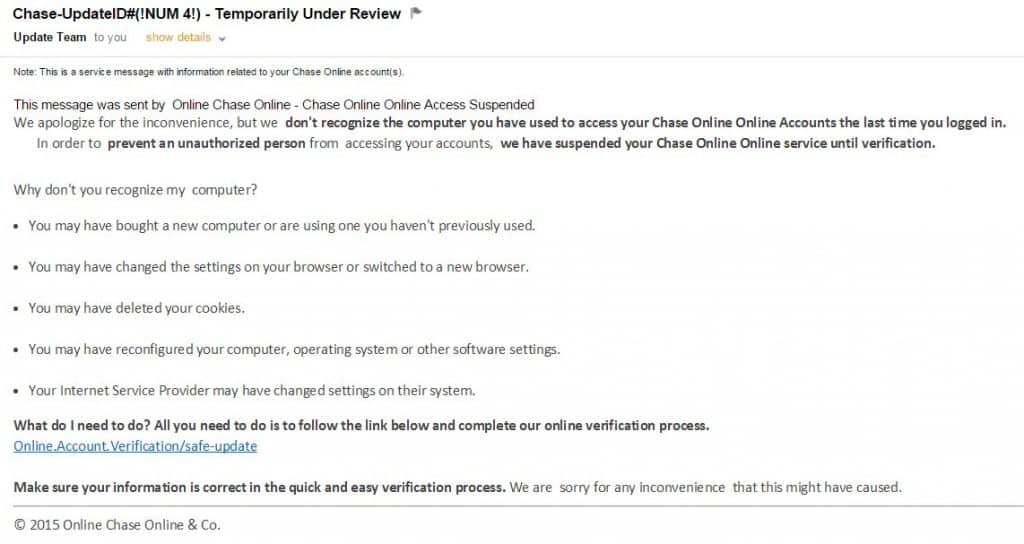HOW DO YOU KNOW IF AN EMAIL IS A SCAM? HERE IS ONE STUPID CROOK EXAMPLE
If you’re reading this, chances are that you have at least one email account(s) and with those email account(s) comes spam and scams. But how do you know if the email you receive Is a scam?
First of all, any time you get an email like this, don’t open it if it looks fake. If you do open it, never click on a link or photo in the email. Always go out and contact your bank, or website account from their website. How do you know if it might be fake? Read below.
Lets use an example that I received in August of 2015:
This is one stupid crook example of a scam designed to get you to enter account information about a Chase Bank account.
Here is a copy of the email as it shows up in many email readers. This one happens to be AOL.com (which has a really good spam filter), but it got through anyway; more on that later. Although this example is from AOL, it can be sent to any email account.
Here is a screen shot of the email example as it shows up on a windows machine (I know I said don’t do this, but click on the email image to see it larger) :
Scams like this are designed to make your heart race a little and question what the heck could be wrong with the account? The scammer relies on the honest person to immediately want to correct the problem. But if you have experience at receiving these emails, you should know to take a moment to calm down and then you notice things about it.
The first thing to look for is where it is from? If it isn’t from the bank, which it should be, treat it as a scam. In this case it shows that it is from the “Update Team”. But there is a “show details” button that you can click on to show the email address of the sender. This one shows it is from “Update Team …ear30@gmail.com”. That email address has nothing to do with Chase Bank and what does the update team have to do with an account review? Smarter scammers will use a sender name similar to the bank website address. There could be an added “.” to the bank (or other website name), or even a misspelled bank name. Study the from address for a few moments. If it is close to the real thing, you may not catch it with a quick look.
Now for the way this got by the spam filter and what made this sender a stupid crook:
Above is a screen shot of the email as it shows on an Android email reader (Click on the email image to see it larger – if you feel lucky that this article is not a scam). Some extra reading can be seen, because the Android email reader does not use windows coding.
At the beginning of the email is a header of random words. This is designed to make the email look legitimate and get past scam filters (Not shown in the screen shot is the bottom of the email that has more random text). This is coded in a way that windows email readers will not show the text, but the spam filter will see it.
This reader also shows the sender address without having to open anything.
There you have it.
This was just one stupid crook example of thousands of all kinds of different scams out there. Sign up for the www.ForSecuritySake.com newsletter at the bottom of any page and we will write about scams and other safety and security stories as we come across them.
Be Safe Out There.




